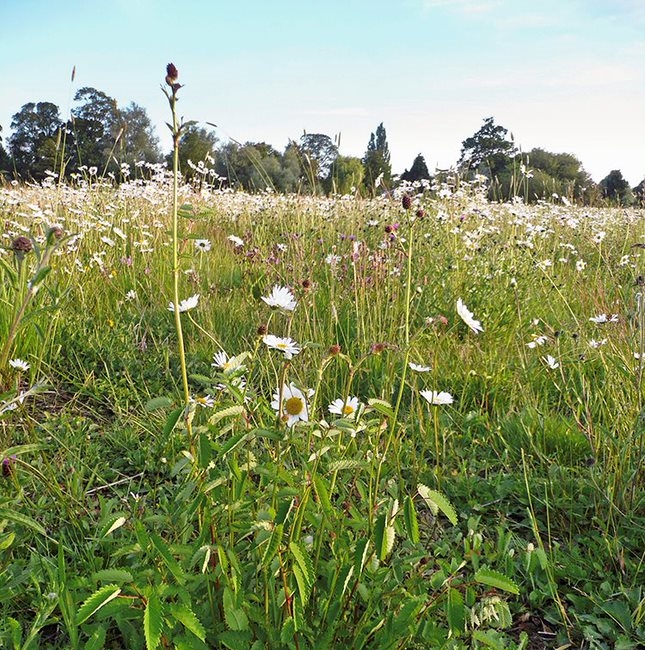Suggested Sowing Rates
40kg/ha 16kg/acre 4g/m2
Description
EM8 contains species suitable for seasonally wet soils and is based on the vegetation of traditional floodplain and water meadows. Soils in wet meadows may flood for short periods in winter, but are usually well drained in summer.
Ground Preparation
Endeavour to select ground that is not highly fertile and does not have a problem with perennial weeds. Good preparation is essential to success so aim to control weeds and produce a good quality seed bed before sowing.
To prepare a seed bed first remove weeds using repeated cultivation. Then plough or dig to bury the surface vegetation, harrow or rake to produce a medium tilth, and roll, or tread, to produce a firm surface.
Sowing
Sowings on ground prone to winter flooding are safest either in the early autumn or in spring once the land has drained. Most plants need time to grow mature enough to withstand flooding.
The seed must be surface sown and can be applied by machine or broadcast by hand. To get an even distribution and avoid running out, divide the seed into two or more parts and sow in overlapping sections. Do not incorporate or cover the seed but firm in with a roll, or by treading, to give good soil/seed contact.
First Year Management
Most of the sown meadow species are perennial and are slow to establish. Soon after sowing there will be a flush of annual weeds, arising from the soil seed bank. These weeds can look unsightly, but they will offer shelter to the sown seedlings, are great for bugs, and they will die before the year is out. So resist cutting the annual weeds until mid to late summer, especially if the mixture contains Yellow Rattle, or has been sown with a nurse of cornfield annuals. Then cut, remove and compost the cuttings. This will reveal the young meadow, which can then be kept short by grazing or mowing through to the end of March of the following year. Dig out any residual perennial weeds such as docks.
Management Once Established
In the second and subsequent years EM8 sowings can be managed in a number of ways which, in association with soil fertility, will determine the character of the grassland. The best results are usually obtained by traditional meadow management based around a main summer hay cut in combination with autumn and possibly spring mowing or grazing.
Meadow grassland is not cut or grazed from spring through to July/August to give the sown species an opportunity to flower. After flowering in July or August take a ‘hay cut’ : cut back with a scythe, strimmer or tractor mower to c 50mm. Leave the ‘hay’ to dry and shed seed for 1-7 days then remove from site. Mow or graze the re-growth through to late autumn/winter to c 50mm and again in spring if needed.
Wetland habitats are characteristically quite variable in composition, reflecting local drainage and management. Conditions can vary, for instance, between the highs and lows in ridge and furrow grassland. Localized differences may require a targeted approach. For example, boggy areas which remain waterlogged for much of the year may be best sown with pond edge mixture EP1.
Brush Harvested Alternatives
Please take a look at our wild harvested Avis Meadow Mixture EM13 which has been harvested straight from Avis meadow, an unimproved species rich meadow and nature reserve owned by Wiltshire Wildlife Trust. This mixture is suitable for wet soils with impeded drainage.


